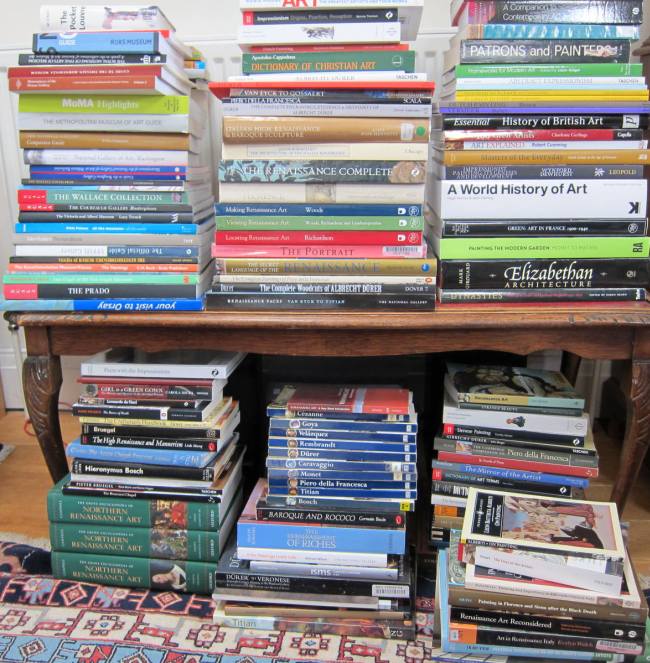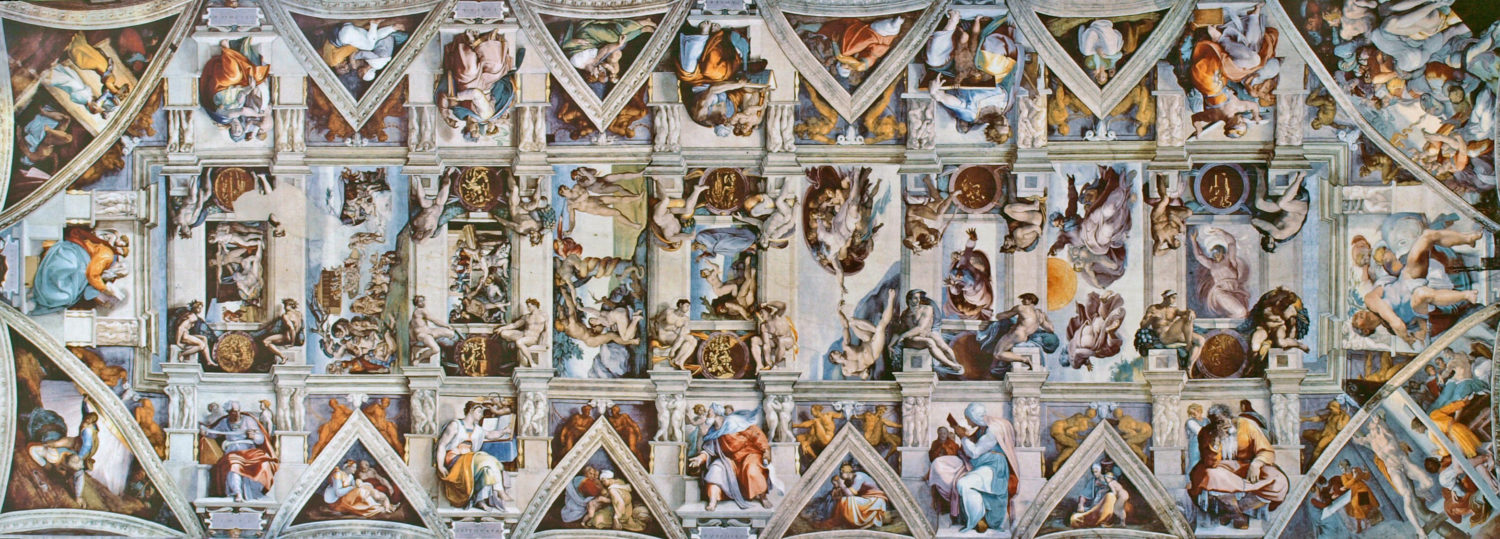
There is no doubt that it is immensely enjoyable to walk into one of the world’s great art museums and to just wander around looking at the works. However if you learn a little about the context of a picture it becomes much more enjoyable, and the more context you learn the greater that enjoyment. To the point where there are books about just one single picture (eg Girl in a Green Gown by Carola Hicks). Most museums tell you very little about their pictures in situ, a situation that can be improved slightly with the audio guide, but better still buy the gallery guidebook and read it in front of each picture. And even better still, gain the knowledge by reading a range books.
Art books are excellent in that you can see a reproduction of the painting, often with magnified details, whilst reading about it. So you can read about the frescoes by Cimabue and Giotto at the Convent Church of St Francis at Assisi, whilst sitting in your house in, say, Glasgow. The very nature of art books means you tend to dip in and out of them, instead of reading them from cover to cover. And when you read you always want to branch off and read about new areas, which means buying more books. Studying art very quickly leads to the ownership of literally wheelbarrows full of books.
The best way to buy books is pre-owned, they work just as well as new ones and you can save lots of money to spend on trips to Florence, Amsterdam, Paris, Madrid, Vienna etc. The best place to shop is, obviously, Amazon. Very many art books can be bought secondhand for one penny plus £2.80 postage each. So the temptation is, when you have an obvious area of weakness, to go and buy a few books to fill the gaps. But don’t just look at Amazon, look at Abe books and eBay too, these can sometimes be cheaper.
So what to buy?
- Well written, easy to read “overview” books which allow you to put everything in context. Art by Susie Hodge published by Quercus is absolutely excellent as is Art by Robert Cummings published by DK. You will find yourself coming back to these time after time. Art for Dummies by Thomas Hoving serves the same purpose.
- To understand the Italian Renaissance Giorgio Vasari’s Lives of the Artists is essential, the Oxford World Classic translation is readable. Alberti’s On Painting is both charming and very important, the Penguin translation is good.
- The Private Lives of the Impressionists by Sue Roe gives a wonderful overview of the period, is rich in anecdote and helps your understanding of the art greatly. Highly recommended.
- A World History of Art by Honour and Fleming, 960 pages and 4Kg of book, this is the “standard” text which everybody related to the art world has read. So it informs attitudes like no other.
- Story of Art, Gombrich. Probably the best selling complete overview and also highly influential. Only 688 pages.
- Grove Encyclopeadia of Art, in 34 volumes. The standard reference work, now available online, which every university art history student references every day.
Obviously there are very many more. And then, interestingly, there are the fiction works and non art books which, one way or another, provide some fantastic context:
- Down and Out in Paris and London. George Orwell.
- The Agony and the Ecstasy. Irving Stone.
- Tales from Ovid. Ted Hughes.
- The Moon and Sixpence. Somerset Maugham.
- Girl with Pearl Earring. Tracy Chevalier.
- The Decameron. Giovanni Boccaccio.
- My Dear Erasmus. David Bentley-Taylor.
Once again there are many more. You really can just immerse yourself into different worlds.
Don’t, whatever you do, limit yourself to the books here. Go and browse Amazon, you will find gems for pennies. Then you too will need a wheelbarrow.
